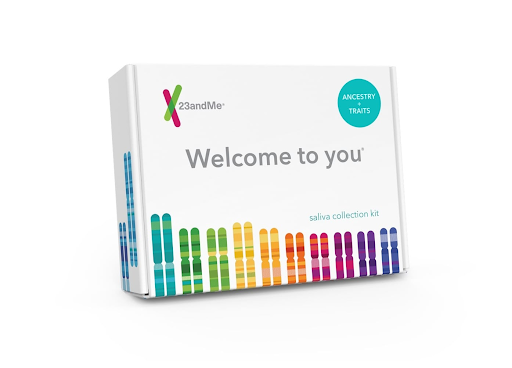How Accurate is 23andMe Ancestry?

Photo source: 23andMe
March 9, 2023
Have you ever wondered where your ancestors came from, or want to learn more about your heritage?
A popular way to discover this is to take a DNA test. The 23andMe Ancestry test is one of the most well-known DNA tests.
The test involves customers buying the kit and providing a saliva sample, then sending the kit back to the company lab to be tested. Within a few weeks, the company sends the customer’s genetic health risk, physical features, DNA relatives, and ancestry results to the customer’s account.
A common question that surrounds the test is: how accurate is it?
Accuracy
According to the customer care site, 23andMe claims that they have a “70% confidence in a DNA assignment” in the ancestry test. Despite this, that still means that “there’s still a 30% chance the ancestry of that segment may be something slightly different.”
Why?
The company claims that the 30% chance of a non-accurate DNA assignment could happen due to the fact that a customer’s ancestors may have lived on the border of countries, making it difficult to distinguish between the two. An inaccurate DNA assignment could also result from 23andMe simply not having enough data from a specific region.
The company admits that some regions of the world have more data than others. Their website explains that the test looks at two classic measures of model performance, precision and recall. Precision and recall are standard measurements that scientists use to test how well a prediction system works.
23andMe uses precision to determine how often the predicted DNA actually comes from a specific region. Whereas they use recall to determine how often the sorting system correctly indicates that DNA came from that particular region.
There is a table comparing precision to recall for every region DNA is tested through. For example, certain tested areas like Central Asian, Peninsular Arab, Anatolian, Southern Chinese, and Indonesian all have high precision and low recall. This means that there is a slight chance that the DNA from these regions could be sorted incorrectly.
Whereas the tested areas of Ashkenazi Jewish, Central & South Asian, European, Japanese, and Korean for example have high precision and recall. Meaning that results from that area are very likely to be accurate.
DNA Relatives
When it comes to the DNA relatives feature, the company claims to not be 100% confident in their prediction because “some relationships involve similar percentages of shared DNA.” They used the example of a grandparent/grandchild relationship and a half-siblings relationship, as it can be hard to distinguish between the two due to similar DNA percentages.
Personal Experience
When I took the test, I already had some knowledge of what my results would include. However, I was shocked when my results had low percentages for regions I knew my family had come from and instead came back with high percentages from regions that made no sense.
However, a few months later, I received a message explaining that due to new data, my results had been “updated”. I found the new results and percentages to be much more accurate and made more sense after this update.
Reading the precision and recall list, I learned that the regions my family descends from have average precision and recall. So it is not surprising that my results were not completely accurate the first time. The updating of results is a relatively common thing for 23andMe, as it has happened a few more times in the last few years since I first took the test.
Additionally, my DNA relatives were spot on and I recognized a lot of last names. Once you load your information onto the website or app, you can see how the matches for relatives fit into your family tree. However, it can be hard to decipher whether or not that relative is through your paternal or maternal side.
Overall, I had a great experience with the 23andMe and I’m pleased with the accuracy of my results. However, I wish that I would have read the customer care site earlier, as it has a lot of important information about the accuracy of the test.
